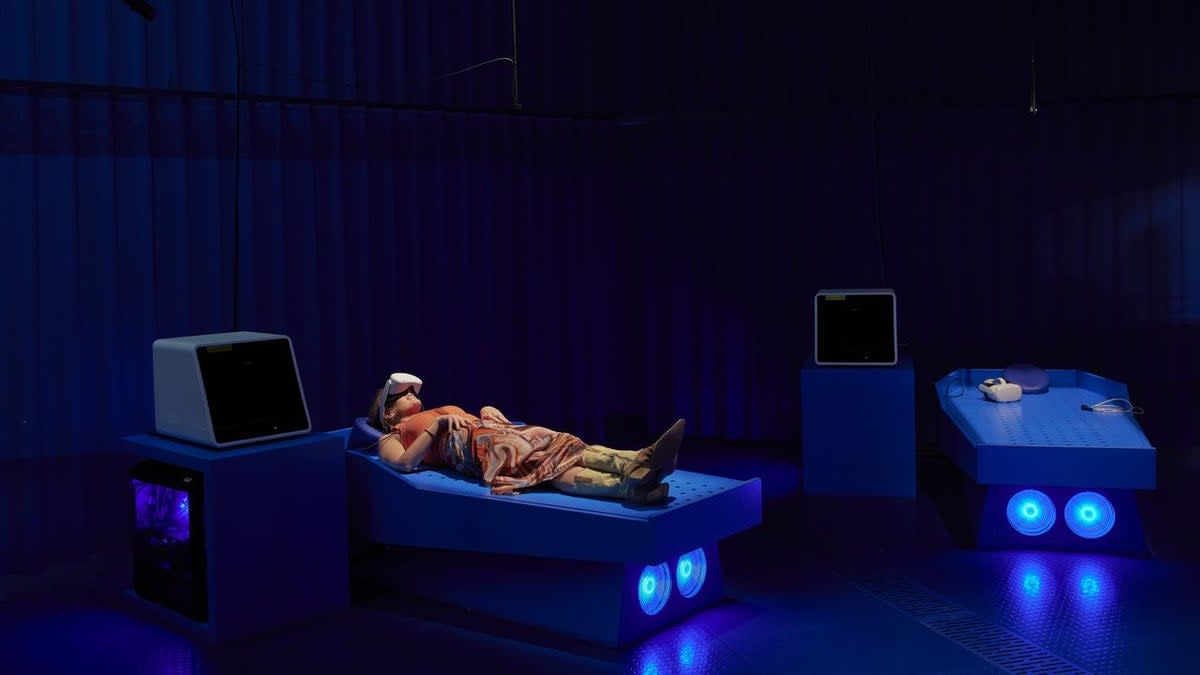VR ‘death simulator’ shows what happens when you die

The notion of resting in peace is being inverted by a nerve-shredding VR experience that shows you what it’s like to die.
Described as a “death simulator”, the unsettling new art installation takes you “from cardiac arrest to brain death” in a hospital-style setting alongside other participants. At one point, staff members dressed in dark scrubs even try to revive you as you start to die.
As part of the experience, visitors lie down on a bed that vibrates to the beat of their pulses while wearing VR headsets. The goggles allow you to see a holographic image of your body, which is captured by a camera above you as you float into the afterlife.
The simulation — which is open to the public till August at a gallery in Melbourne, Australia — is the brainchild of artist Shaun Gladwell, who specialises in extended-reality experiences. From the looks of it, the VR headset used in the art installation is a Meta Quest 2, a £400 device from the company formerly known as Facebook.
Reactions to the death simulator range from terror to excitement. TikToker Marcus Crook went through it, and broke down what it was like in a clip.
He said: “I can see how people are saying it would cause anxiety and panic — [it] definitely borderlines that.
“They do put your finger on a heart-rate monitor and they tell you to raise your hand if you’ve had enough or you want to quit.
“What happens is, you’re laying down, the bed vibrates, you flatline, doctors come over the top of you, you can see yourself in the goggles and they try to revive you.
“It doesn’t work, then you float up past them into space and it keeps going.”
@croom12 Replying to @Julia Ess
♬ original sound - Marcus Crook
“That’s gotta be really bad for your psyche? I feel like the brain would panic?” said one TikTok user. Another commenter compared it to the Avatar films, in which humans (including a scientist who passes away) assume the identities of blue aliens on a distant planet called Pandora.
Of course, Hollywood is filled with conflicting depictions of the hereafter, from the downright horrific (Flatliners) to pleasantly utopian (The Good Place). An Amazon comedy series called Upload even depicts a future where humans transfer themselves into a virtual afterlife of their choosing.
Meanwhile, in reality, VR tech is being used to create a host of cerebral and downright lethal experiences. Last year, a VR headset concept emerged that contained ‘’explosives’’ rigged to “kill” the wearer if they lose a video game.
A VR app called Mist can also purportedly turn videos into everlasting memories. It’s easy to see how it could be used to revisit moments with loved ones who have passed in an immersive, 360-degree setting.
Which, as I’m sure you’ll agree, is infinitely more fun than witnessing your own death...

 Yahoo Lifestyle
Yahoo Lifestyle 
